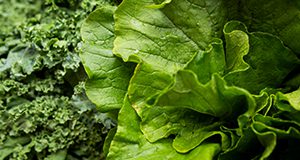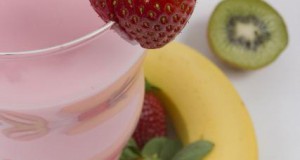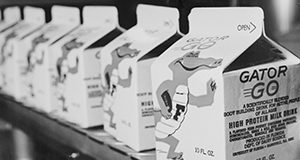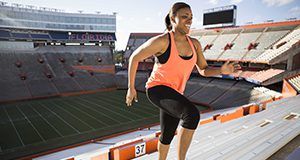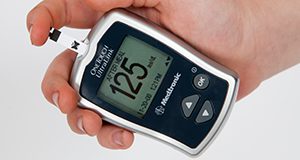Planear sus comidas puede ayudar a controlar las porciones y la cantidad de carbohidratos que usted consume a través del día. Esto es especialmente importante si usted padece de la diabetes o si usted es una persona en alto riesgo de padecer de la diabetes. This 2-page document is the Spanish version of Healthy Eating: Create Your Plate. Written by Jennifer Hillan and Linda B. Bobroff, and published by the UF/IFAS Department of Family, Youth and Community Sciences, revised December 2018.
http://edis.ifas.ufl.edu/fy907
Tag: Elder Nutrition and Food Safety Program (ENAFS)
Alimentacion Saludable: Bebidas saludables
Los batidos son una manera deliciosa de incorporar más frutas y nutrientes a su dieta. This 2-page fact sheet provides tasty recipes for shakes and smoothies. It is the Spanish version of Healthy Eating: Drink to Your Health. Written by Jennifer Hillan, Emily Minton, and Linda B. Bobroff, and published by the UF/IFAS Department of Family, Youth and Community Sciences, revised September 2018.
http://edis.ifas.ufl.edu/fy697
Alimentacion Saludable: El calcio
El calcio es el mineral principal que se encuentra en nuestros huesos y dientes. Nosotros necesitamos calcio para el buen funcionamiento de los músculos y los nervios. Written by Linda B. Bobroff, and published by the UF/IFAS Department of Family, Youth and Community Sciences, revised January 2018.
http://edis.ifas.ufl.edu/fy069
Vida Saludable: Los alimentos pueden afectar sus medicamentos
Algunos alimentos pueden afectar la manera en que los medicamentos con prescripción o sin prescripción médica funcionan, ya sea retardando, disminuyendo o aumentando la cantidad del medicamento que el cuerpo absorbe. Esto puede ocasionar efectos secundarios peligrosos y no deseados. Written by Paulina Wittkowsky and Linda B. Bobroff, and published by the UF/IFAS Department of Family, Youth and Community Sciences, revised January 2018.
http://edis.ifas.ufl.edu/fy677
Healthy Living: Changing Your Lifestyle to Improve Your Blood Pressure
Most people know that high blood pressure can often be improved by making smart dietary choices and choosing foods lower in sodium. But did you know there are other ways to help control high blood pressure and even prevent it? This 4-page fact sheet is a major revision that discusses four lifestyle changes that can help you keep blood pressure down. Written by Karla P. Shelnutt and Linda B. Bobroff, and published by the UF/IFAS Department of Family, Youth and Community Sciences, revised February 2018.
http://edis.ifas.ufl.edu/fy1129
Healthy Living: Diabetes Care During Sick Days
When you are sick, your blood glucose levels are harder to regulate. Being sick often causes blood glucose levels to rise, which can lead to serious health conditions. It is important to have a plan to manage your sick days so you are prepared ahead of time. This 3-page fact sheet is a major revision that provides information on the ways illness can affect blood glucose, suggestions for easy foods to have on hand, and a checklist to use when deciding whether a call to a doctor is in order. Written by Jennifer Hillan, Emily Minton, and Linda B. Bobroff, and published by the UF/IFAS Department of Family, Youth and Community Sciences, revised February 2018.
http://edis.ifas.ufl.edu/fy884
Seguridad Alimentaria: Juegatela seguro con los huevos
Los huevos frescos pueden contener bacterias que podrían causar una enfermedad llamada salmonelosis. Esta enfermedad causada por alimentos provoca vómito y diarrea. Esta puede ser severa y hasta podría ser fatal para los adultos de mayor edad. Reduzca el riesgo de contraer esta enfermedad al seguir estas pautas. Written by Linda B. Bobroff and Jennifer Hillan, and published by the UF/IFAS Department of Family, Youth and Community Sciences, revised February 2018.
http://edis.ifas.ufl.edu/fy194
Prevencion de Caidas: Seguridad en el Hogar
La casa donde usted ha vivido la mayor parte de su vida ahora puede causarle problemas a medida que envejece. Lo bueno es que hay cambios que puede hacer para reducir el riesgo de caídas y mantener su casa un lugar seguro para vivir. Use la siguiente lista para identificar posibles áreas problemáticas en su casa. Repasado julio 2017. Written by Linda B. Bobroff, and published by the UF Department of Family, Youth and Community Sciences.
http://edis.ifas.ufl.edu/fy859
Healthy Eating: Improve Nutrition with SNAP
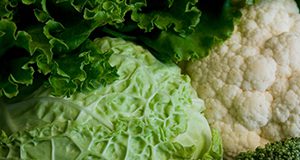 SNAP (the Supplemental Nutrition Assistance Program, formerly called Food Stamps) is one of several nutrition programs that help people meet their dietary needs. This 2-page fact sheet provides a brief overview of SNAP and examples of ingredients for healthy meals. Written by Linda B. Bobroff, and published by the UF Department of Family, Youth and Community Sciences, revised November 2016.
SNAP (the Supplemental Nutrition Assistance Program, formerly called Food Stamps) is one of several nutrition programs that help people meet their dietary needs. This 2-page fact sheet provides a brief overview of SNAP and examples of ingredients for healthy meals. Written by Linda B. Bobroff, and published by the UF Department of Family, Youth and Community Sciences, revised November 2016.
http://edis.ifas.ufl.edu/fy918
Vida Saludable: Diabetes
La diabetes es una condición en la que el cuerpo tiene dificultad de producir o utilizar la insulina. La insulina es una hormona que controla la cantidad de glucosa (azúcar) en nuestra sangre. Cuando una persona tiene diabetes, el cuerpo no produce insulina o produce muy poca insulina o una insulina que no funciona bien. Esto resulta en altos niveles de glucosa en la sangre.
This 4-page fact sheet is a major revision that discusses diabetes, possible consequences of high blood glucose, risk factors, healthy weights, symptoms, control methods, and ways to choose a healthy diet. Written by Linda B. Bobroff, and published by the UF Department of Family, Youth and Community Sciences, revised October 2016.
http://edis.ifas.ufl.edu/fy079
Seguridad Alimentaria: Crucigrama de alimentos do alto riesgo
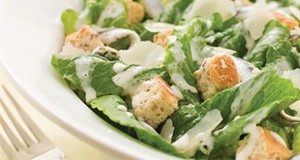 Algunos alimentos pueden causar más enfermedades alimentarias que otros. La leche ó jugos no pasteurizados no son seguros para consumir. Alimentos que no han sido cocinados, como lo son los huevos crudos ó a medio cocinar son particularmente riesgosos.
Algunos alimentos pueden causar más enfermedades alimentarias que otros. La leche ó jugos no pasteurizados no son seguros para consumir. Alimentos que no han sido cocinados, como lo son los huevos crudos ó a medio cocinar son particularmente riesgosos.
This 2-page fact sheet is the Spanish language version of Food Safety: High-Risk Foods Crossword. Written by Jennifer Hillan and Linda B. Bobroff, and published by the UF Department of Family Youth and Community Sciences, June 2015. (Photo Credit: Catherine Yeulet/iStock/Thinkstock)
http://edis.ifas.ufl.edu/fy1170
Healthy Living: Checking Blood Glucose
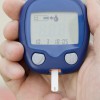 Checking your blood glucose levels is an important part of managing diabetes. Your blood glucose values let you know how well your care plan is working and if you need to make any changes. This 3-page fact sheet was written by Jennifer Hillan and Linda B. Bobroff, and published by the UF Department of Family Youth and Community Sciences, February 2015.(Photo iStock/Thinkstock.com)
Checking your blood glucose levels is an important part of managing diabetes. Your blood glucose values let you know how well your care plan is working and if you need to make any changes. This 3-page fact sheet was written by Jennifer Hillan and Linda B. Bobroff, and published by the UF Department of Family Youth and Community Sciences, February 2015.(Photo iStock/Thinkstock.com)
http://edis.ifas.ufl.edu/fy868
Healthy Living for Elders: Use Your Medicines Safely!
 Medicines can help us feel better and improve our health, but if we do not use them correctly, they can make us feel worse or even cause major health problems. To use your medicines safely, keep the following tips in mind. This 4-page large print fact sheet was written by Paulina Wittkowsky, Linda B. Bobroff, and Emily Minton, and published by the UF Department of Family Youth and Community Sciences, November 2014. (Photo: Thinkstock.com)
Medicines can help us feel better and improve our health, but if we do not use them correctly, they can make us feel worse or even cause major health problems. To use your medicines safely, keep the following tips in mind. This 4-page large print fact sheet was written by Paulina Wittkowsky, Linda B. Bobroff, and Emily Minton, and published by the UF Department of Family Youth and Community Sciences, November 2014. (Photo: Thinkstock.com)
http://edis.ifas.ufl.edu/fy667
Healthy Living: Diabetes Warning Signs
 Could you have diabetes and not know it? It is possible. More than one-fourth of the people who have diabetes don’t know they have the disease! Treating and managing diabetes greatly decreases the risk of diabetes-related health problems. Review the list of warning signs below and check any that you have experienced. This 2-page fact sheet was written by Linda B. Bobroff, and published by the UF Department of Family Youth and Community Sciences, July 2014.
Could you have diabetes and not know it? It is possible. More than one-fourth of the people who have diabetes don’t know they have the disease! Treating and managing diabetes greatly decreases the risk of diabetes-related health problems. Review the list of warning signs below and check any that you have experienced. This 2-page fact sheet was written by Linda B. Bobroff, and published by the UF Department of Family Youth and Community Sciences, July 2014.
http://edis.ifas.ufl.edu/fy084
Food Safety: High Risk Foods Crossword
 Some foods are more likely to cause foodborne illness than others. Unpasteurized milk or juices are not safe to consume. Uncooked foods that are made with raw or undercooked eggs are especially risky. This 2-page fact sheet was written by Linda B. Bobroff and Jennifer Hillan, and published by the UF Department of Family Youth and Community Sciences, February 2014.
Some foods are more likely to cause foodborne illness than others. Unpasteurized milk or juices are not safe to consume. Uncooked foods that are made with raw or undercooked eggs are especially risky. This 2-page fact sheet was written by Linda B. Bobroff and Jennifer Hillan, and published by the UF Department of Family Youth and Community Sciences, February 2014.
http://edis.ifas.ufl.edu/fy927
Food Safety: Does Your Kitchen Pass the Test?
 Older adults are at increased risk for foodborne illness. To help reduce your risk, follow safe food handling practices at home. How does your kitchen measure up? This 3-page fact sheet was written by Linda B. Bobroff and Jennifer Hillan, and published by the UF Department of Family Youth and Community Sciences, October 2013.
Older adults are at increased risk for foodborne illness. To help reduce your risk, follow safe food handling practices at home. How does your kitchen measure up? This 3-page fact sheet was written by Linda B. Bobroff and Jennifer Hillan, and published by the UF Department of Family Youth and Community Sciences, October 2013.
http://edis.ifas.ufl.edu/fy926
Food Safety: Play it Safe with Eggs
 Fresh eggs may contain bacteria that can cause salmonellosis. This foodborne illness causes vomiting and diarrhea. It can be severe and even fatal in older adults. Reduce your risk for this foodborne illness by following these guidelines. This 1-page fact sheet was written by Linda B. Bobroff and Jennifer Hillan, and published by the UF Department of Family Youth and Community Sciences, June 2013.
Fresh eggs may contain bacteria that can cause salmonellosis. This foodborne illness causes vomiting and diarrhea. It can be severe and even fatal in older adults. Reduce your risk for this foodborne illness by following these guidelines. This 1-page fact sheet was written by Linda B. Bobroff and Jennifer Hillan, and published by the UF Department of Family Youth and Community Sciences, June 2013.
http://edis.ifas.ufl.edu/fy193
Healthy Eating: Calcium / Alimentación Saludable: Calcio
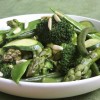 Calcium is the major mineral found in your bones and teeth. Many older adults don’t get enough calcium from the foods they eat. This can lead to bone loss and the bone disease osteoporosis. Osteoporosis puts people at high risk for bone fractures. These 1-page, large print fact sheets were written by Linda B. Bobroff, and published by the UF Department of Family Youth and Community Sciences, June 2013.
Calcium is the major mineral found in your bones and teeth. Many older adults don’t get enough calcium from the foods they eat. This can lead to bone loss and the bone disease osteoporosis. Osteoporosis puts people at high risk for bone fractures. These 1-page, large print fact sheets were written by Linda B. Bobroff, and published by the UF Department of Family Youth and Community Sciences, June 2013.
English: http://edis.ifas.ufl.edu/fy057
Spanish: http://edis.ifas.ufl.edu/fy058
Healthy Living: Tips for Staying Regular (FCS8565/FY072)
 Constipation means having a bowel movement fewer than three times a week. Stools are usually hard and can be painful to pass. Constipation is common among older adults.This 1-page fact sheet was written by Linda B. Bobroff, and published by the UF Department of Family Youth and Community Sciences, January 2013.
Constipation means having a bowel movement fewer than three times a week. Stools are usually hard and can be painful to pass. Constipation is common among older adults.This 1-page fact sheet was written by Linda B. Bobroff, and published by the UF Department of Family Youth and Community Sciences, January 2013.
http://edis.ifas.ufl.edu/fy072
Healthy Eating: Folate (FCS8567/FY066)
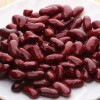 Folate is one of the B vitamins. It is involved in the formation of DNA, the genetic material found in all cells of your body. Folate is an important nutrient for everyone. It is especially important for pregnant and nursing women, growing children, and older adults. Health problems may result if people do not get enough folate. This 2-page fact sheet was written by Linda B. Bobroff, and published by the UF Department of Family Youth and Community Sciences, October 2012.
Folate is one of the B vitamins. It is involved in the formation of DNA, the genetic material found in all cells of your body. Folate is an important nutrient for everyone. It is especially important for pregnant and nursing women, growing children, and older adults. Health problems may result if people do not get enough folate. This 2-page fact sheet was written by Linda B. Bobroff, and published by the UF Department of Family Youth and Community Sciences, October 2012.
http://edis.ifas.ufl.edu/fy066
